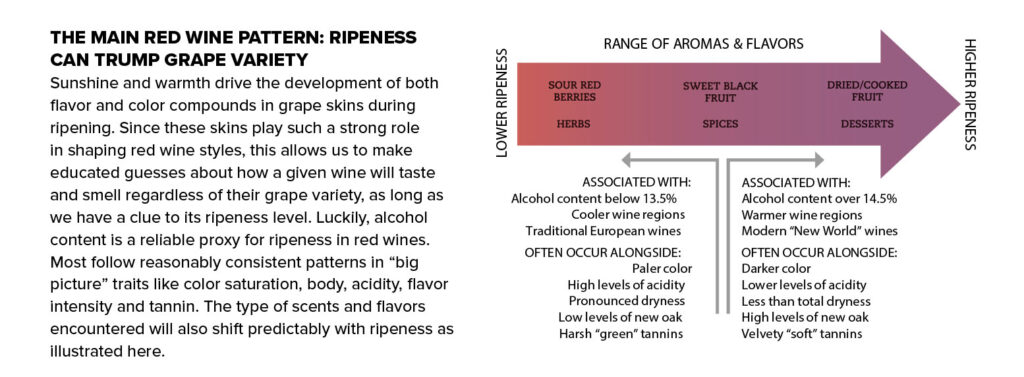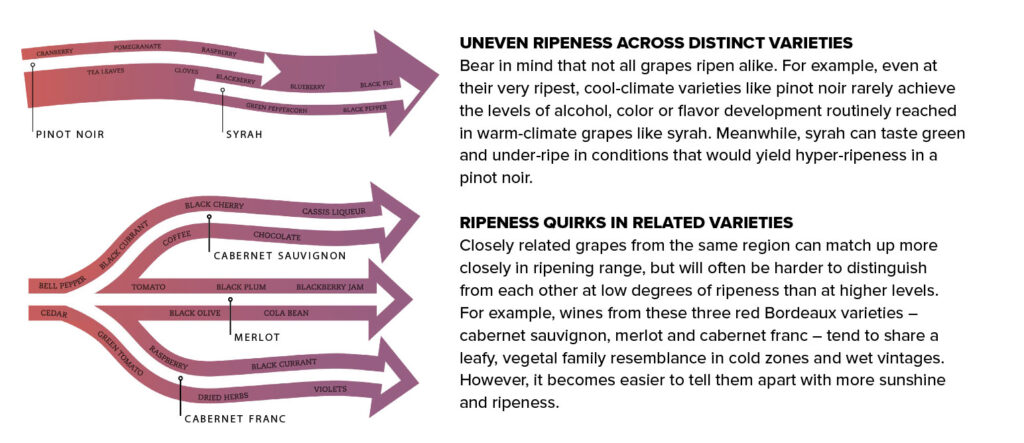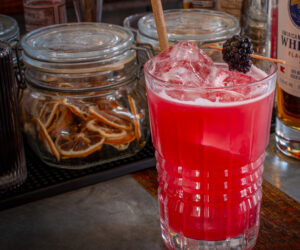Red wines may be less diverse in body and flavor intensity than whites, but they do range more widely in aromatic character. This is because most grape flavor compounds are found in the peel, and only red wines are fermented with their skins. This can make red wines harder to categorize in some ways, but there are still helpful patterns that can be observed when we take a step back and look at red wines as a group.
The most obvious pattern centers on grape ripeness, which in turn leads winemakers to dial variables like tannin extraction or new oak flavor up or down. But some variations reflect relationships between specific varietals, as with the predictable family resemblance patterns found among genetically related varieties.
The main red wine pattern: Ripeness can trump grape variety
Sunshine and warmth drive the development of both flavor and color compounds in grape skins during ripening. Since these skins play such a strong role in shaping red wine styles, this allows us to make educated guesses about how a given wine will taste and smell regardless of their grape variety, as long as we have a clue to its ripeness level.
Luckily, alcohol content is a reliable proxy for ripeness in red wines. Most follow reasonably consistent patterns in “big picture” traits like color saturation, body, acidity, flavor intensity and tannin. The type of scents and flavors encountered will also shift predictably with ripeness as illustrated here.


Marnie Old is one of the country’s leading wine educators. Formerly the director of wine studies for Manhattan’s French Culinary Institute, she is best known for her visually engaging books published by DK – such as Wine: A Tasting Course. Marnie currently serves as director of vinlightenment for Boisset Collection.






